Meanwhile, In Ireland: The Newgrange
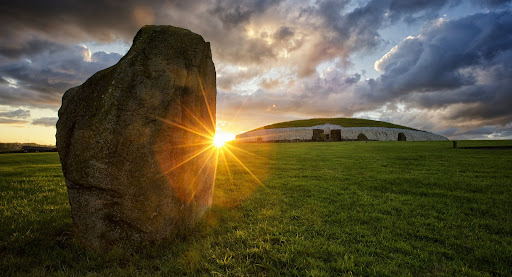
Photo courtesy of Ireland.com
Located in County Meath, along Ireland’s “Ancient East,” there stands a complex of sacred monuments, megalithic structures that rest like silent giants. This is a place called Brú na Bóinne (pronounced Broo Naw Boy+Nyuh), meaning the Palace of the Boyne. Some 90+ sites make up this impressive complex.
In the old days, this sprawling complex was the resting place for the great High Kings of Ireland and a spiritual and cultural hub in tandem with the nearby Tara, the seat of the High Kings. Among the tombs and monuments that make up the complex, one is perhaps the most impressive. It is a massive tomb thought in days gone by to rest on top of a portal between our world and the Otherworld.
It was not a tomb for mortal flesh, but rather one could say, a vessel of souls.
This, of course, is the Newgrange, and it is at least 5,000 years old, or more, dating back to the neolithic era, as many of the structures of Brú na Bóinne do. This also means it predates both Stonehenge and the Pyramids at Giza. Additionally, this means that it predates the unification of North and South Egypt by at least a century, so it is in fact older than Ancient Egypt.
This massive passage tomb is a testament to a civilization that is often overlooked in broader historical discussions. It is symbolic of an organized civilization of people with great knowledge of engineering, astronomy, art, mathematics, and a deep, complex religion, which all came together to create and construct this breathtaking structure. This was a people, who became this civilization following a massive economic shift around 4000 BCE, and would continue on until the Flight of the Earls in 1607 CE, over 5,600 years later.
What is perhaps most impressive about the Newgrange is the precision with which it was built. It was so precisely lined up with the movements of the Sun throughout the year that the only time that the Sun could enter and completely flood the inner chamber was at dawn on the winter solstice.
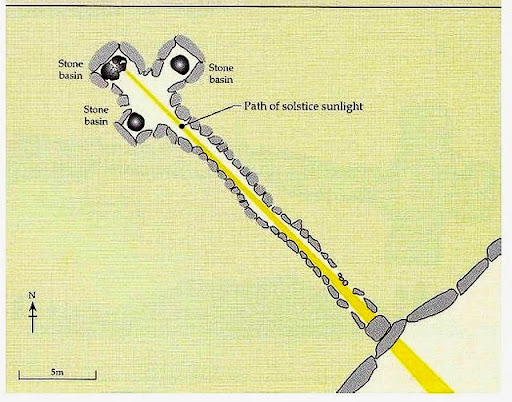
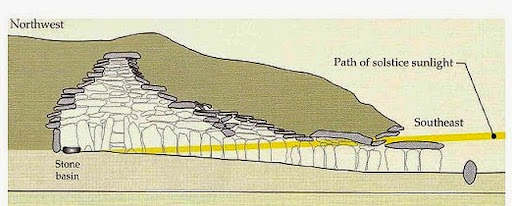
Both of the solstices, especially winter, held high importance to the ancient people of Ireland, as it was the turning point in the year, the midpoint of the darkness of winter in which light, life, and warmth began returning. It was a period of hope and was strongly associated with the Tuatha de Danann, or the people of the great Mother, Danu, particularly with the goddess Brigid, or Bríd (pronounced like Breed or Breej) in Old Irish.
Brigid was the goddess of Fire and considered the keeper of the Sun. The Sun pours through the “Sky Box ” or “Light Box ” above the entrance, flooding the chamber at dawn on the Winter Solstice, and shrouds the Triskelion, or tri-spiral, carved at the back of the chamber. As a triple goddess or deity with three aspects or forms, the Triskelion is often associated with Brigid, reinforcing the connections to Brigid the goddess.

The Newgrange is a sacred place in which the two worlds, ours and the Other, converge, and as such, it became an incredibly significant location. It is guarded by beautifully carved stones, each with spiraling and complex patterns. It is part of the magnificent history of an ancient people nearly forgotten – a beautiful testament to the skill of its creators, indeed.
Every year, people from all across Ireland, led by the druids, would gather, and to welcome the light back to the world.
This tradition to gather at the Newgrange to watch the sunrise on the Solstice is one that lives on to this day, being revived in more recent years. People from all over the world join together at the Newgrange on that day, before the sun comes up, and annually, the sunrise is able to be virtually accessed via live stream. Steeped in ancient mythology, history, and culture the Newgrange, is a recognized World Heritage site, yet sadly, it, and the pre-Christian and pre-Anglicized civilization in Ireland often gets overlooked.
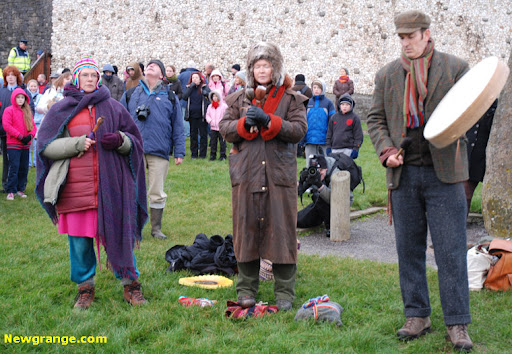





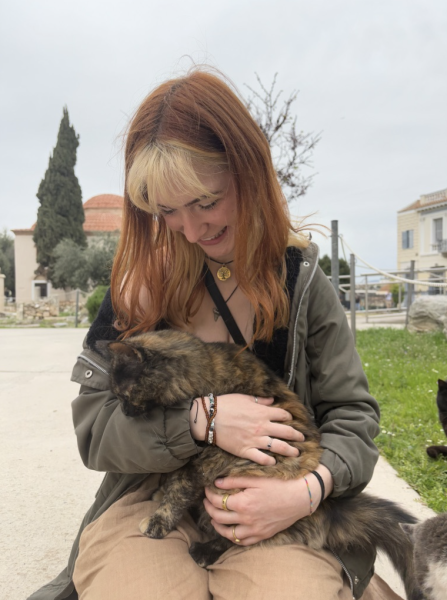
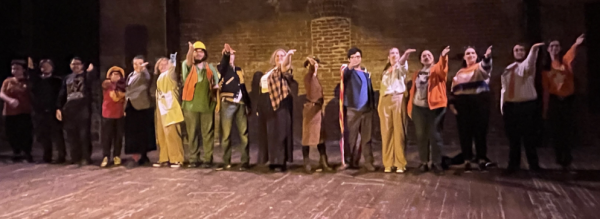
Dr. Sara McClelland • Sep 17, 2022 at 1:47 pm
Thanks, Sabrina, great piece introducing Newgrange. I love thinking of the hope and relief ancient people in Ireland must have felt on the winter solstice. As you pointed out, “the turning point in the year…in which, light, life, and warmth begin returning.” Beautiful!